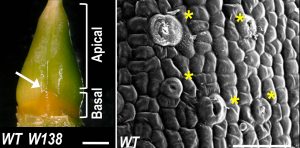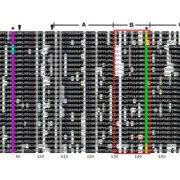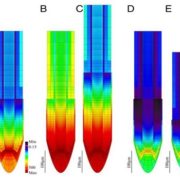The floral C-lineage genes trigger nectary development in petunia and Arabidopsis
 Nectar production is a crucial feature of plants to attract insects and enhance their expansion across the ecosystems. The molecular basis of nectary development has been studied in detail only in the model plant Arabidopsis thaliana, where the nectaries are positioned on the flower receptacle and near the base of the stamen filaments. In this work, Morel et al. studied the asterid model species Petunia hybrida where the nectaries are tightly associated with the carpels, whose identity depends on the floral homeotic C-function. By analyzing loss-of-function mutants and ectopic expression mutants of two C-function genes, they found that nectary development in petunia and Arabidopsis fully depends on these two genes. Despite the differences in the evolutionary trajectory of the C-linage genes and the different nectary position, the authors conclude that petunia and Arabidopsis employ highly similar molecular mechanisms for nectary development. Finally, Morel et al. show that two petunia genes encoding members of the TOE and AP2 family negatively regulate the size of the nectaries. (Summary by Aime Jaskalowoski) Plant Cell 10.1105/tpc.18.00425
Nectar production is a crucial feature of plants to attract insects and enhance their expansion across the ecosystems. The molecular basis of nectary development has been studied in detail only in the model plant Arabidopsis thaliana, where the nectaries are positioned on the flower receptacle and near the base of the stamen filaments. In this work, Morel et al. studied the asterid model species Petunia hybrida where the nectaries are tightly associated with the carpels, whose identity depends on the floral homeotic C-function. By analyzing loss-of-function mutants and ectopic expression mutants of two C-function genes, they found that nectary development in petunia and Arabidopsis fully depends on these two genes. Despite the differences in the evolutionary trajectory of the C-linage genes and the different nectary position, the authors conclude that petunia and Arabidopsis employ highly similar molecular mechanisms for nectary development. Finally, Morel et al. show that two petunia genes encoding members of the TOE and AP2 family negatively regulate the size of the nectaries. (Summary by Aime Jaskalowoski) Plant Cell 10.1105/tpc.18.00425









